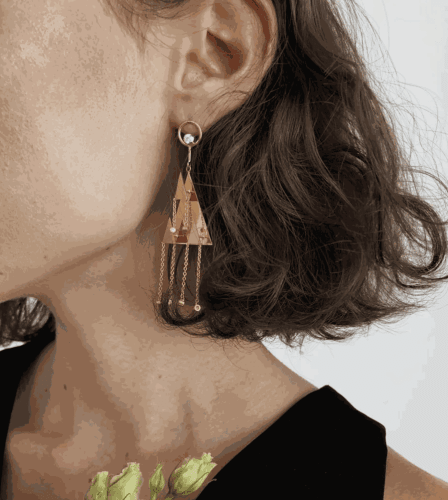Fausto Melotti (1901-1986) was an Italian painter and sculptor who is best known for his slender brass sculptures and small ceramics.
In 1915, he moved with his family to Florence, where he started his academic education, obtaining a degree in Electrotechnic Engineering in 1924. It is around this time that he increasingly became interested in the field of sculpture, deeply influenced by his early education, that introduced him to the art of Renaissance, and by the hand of Italian sculptor Pietro Canonica, who he frequently visited in Torino.
Because of this artistic passion, Melotti enrolled in the Accademia di Brera, graduating in 1928, meeting and befriending Lucio Fontana, with whom he would collaborate until Fontana’s passing in 1968.
In the interwar years, Melotti became a leading member of the group of Milanese abstract artists which also included Fontana. Inspired by his engineering and music studies, Melotti's abstract sculpture had an immaterial, rhythmic and intellectual effect on its viewers: a mixture of nature, geometry and music delicately expressed in brass or plaster. His first solo show was held at the Triennale di Milano in 1936, where he exhibited twelve great exemplars of the Costante Uomo. Thanks to Léonce Rosenberg, he consolidated himself as a prominent artist in France and received the La Sarraz International Prize in Switzerland in 1937.
After witnessing the destruction of the Second World War, Melotti felt it necessary to introduce the human figure into his work. The small ceramic stage sets, or 'teatrini', produced at this time were more narrative and theatrical than the earlier work; their fatalistic melancholy would endure in Melotti's later work, granting him the Grand Prize of the IX Triennale di Milano in 1951. Like the city squares of de Chirico's 'metaphysical paintings', Melotti's little theatres urge the viewer to bring to life the narrative fragments into a coherent performance.
By the late 1960s Melotti's transformation of commonplace materials such as plaster and painted fabric linked him to the Arte Povera generation of artists. His 1967 solo show at the Galleria Toninelli in Milan enhanced Melotti’s figure, re-gaining the attention of the public, and, in particular, becoming the interest of young people. His œvre was internationally recognised, obtaining the Rembrandt Prize of the Johann Wolfgang von Goethe Foundation, Basel in 1974 and the 15th European Prize Umberto Biancamano in 1977.
